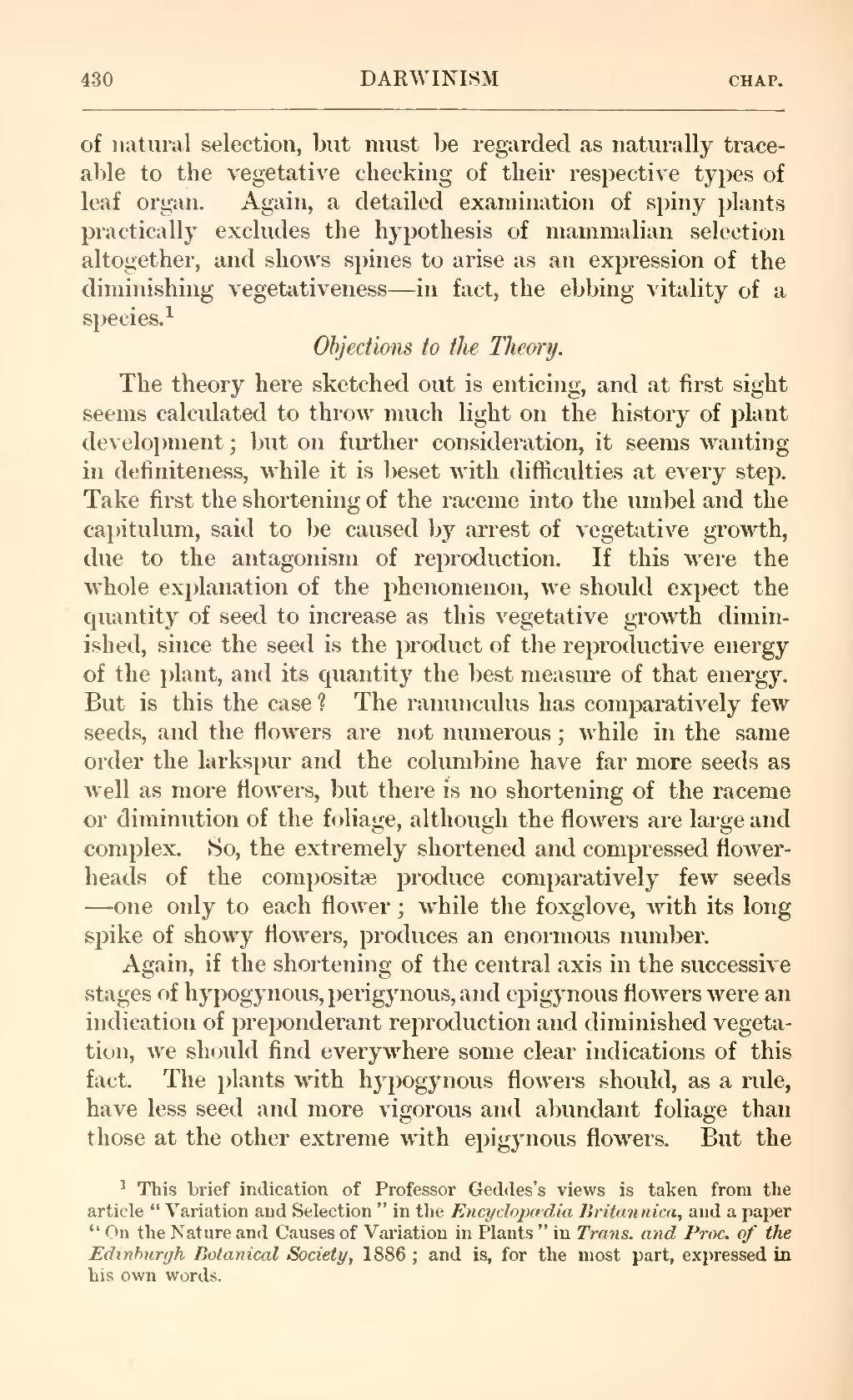of natural selection, but must be regarded as naturally traceable to the vegetative checking of their respective types of leaf organ. Again, a detailed examination of spiny plants practically excludes the hypothesis of mammalian selection altogether, and shows spines to arise as an expression of the diminishing vegetativeness—in fact, the ebbing vitality of a species.[1]
Objections to the Theory.
The theory here sketched out is enticing, and at first sight seems calculated to throw much light on the history of plant development; but on further consideration, it seems wanting in definiteness, while it is beset with difficulties at every step. Take first the shortening of the raceme into the umbel and the capitulum, said to be caused by arrest of vegetative growth, due to the antagonism of reproduction. If this were the whole explanation of the phenomenon, we should expect the quantity of seed to increase as this vegetative growth diminished, since the seed is the product of the reproductive energy of the plant, and its quantity the best measure of that energy. But is this the case? The ranunculus has comparatively few seeds, and the flowers are not numerous; while in the same order the larkspur and the columbine have far more seeds as well as more flowers, but there is no shortening of the raceme or diminution of the foliage, although the flowers are large and complex. So, the extremely shortened and compressed flower-heads of the compositae produce comparatively few seeds—one only to each flower; while the foxglove, with its long spike of showy flowers, produces an enormous number.
Again, if the shortening of the central axis in the successive stages of hypogynous, perigynous, and epigynous flowers were an indication of preponderant reproduction and diminished vegetation, we should find everywhere some clear indications of this fact. The plants with hypogynous flowers should, as a rule, have less seed and more vigorous and abundant foliage than those at the other extreme with epigynous flowers. But the
- ↑ This brief indication of Professor Geddes's views is taken from the article "Variation and Selection" in the Encyclopedia Britannica, and a paper "On the Nature and Causes of Variation in Plants" in Trans. and Proc. of the Edinburgh Botanical Society, 1886; and is, for the most part, expressed in his own words.
